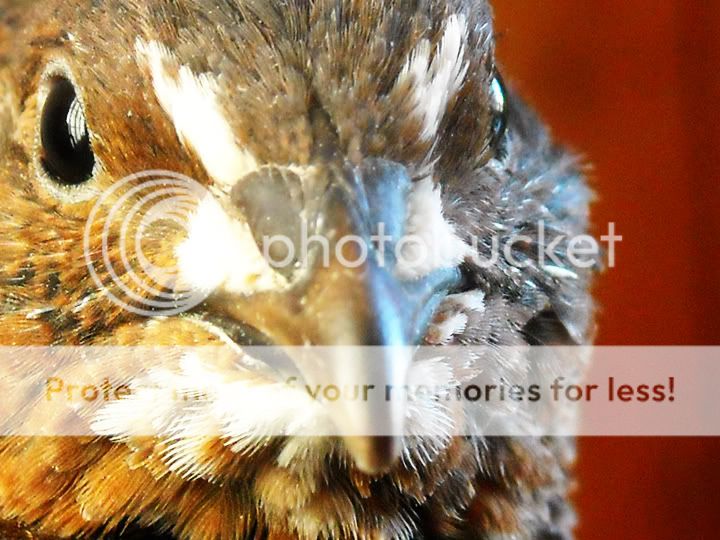- Apr 9, 2010
- 249
- 2
- 111
First off, maybe it is because chickens make more sense to me, but the Quail Calculator seems impossible to me. I don't think it helps that some of the colors don't even have pictures for reference. That aside, now for the real questions..
Okay.. First off, is saying "Tuxedo split"correct? My Rosetta pullet and Tibetan were both hatched with Tuxedo like markings and now both are almost their respectable coloration aside from some white markings. The Tibetan has an X-pattern right on her face and the Rosetta (and Tibetan) have white feathers in their wings/tails.
- Would they be considered partially expressed/incomplete tuxedos?
- If this is the case and in theory, would breeding a split to a tuxedo (versus a solid colored bird) improve ratio of tuxedos in the subsequent hatch?
- Is there a difference in the genes of an entirely white quail versus a white quail with a spot on it's head? Isn't this something to do with said-# of doses of the pied gene?
My male and a female have a single Tibetan colored spot on their heads, and the other female is entirely white.
Finally, regarding colors and how they breed, because the calculator is too confusing, what can I expect from breeding:
- English White to [Jumbo] Brown= ??
- English White to English White (spot on head)= ??
- English White to English White (entirely white)= ??
- English White to Tibetan [Tuxedo split?]= ??
- English White to Rosetta [Tuxedo split?]= ??
For fun, here is my currently nameless Tibetan (Tuxedo split?) with her "X" face-mask:

Okay.. First off, is saying "Tuxedo split"correct? My Rosetta pullet and Tibetan were both hatched with Tuxedo like markings and now both are almost their respectable coloration aside from some white markings. The Tibetan has an X-pattern right on her face and the Rosetta (and Tibetan) have white feathers in their wings/tails.
- Would they be considered partially expressed/incomplete tuxedos?
- If this is the case and in theory, would breeding a split to a tuxedo (versus a solid colored bird) improve ratio of tuxedos in the subsequent hatch?
- Is there a difference in the genes of an entirely white quail versus a white quail with a spot on it's head? Isn't this something to do with said-# of doses of the pied gene?
My male and a female have a single Tibetan colored spot on their heads, and the other female is entirely white.
Finally, regarding colors and how they breed, because the calculator is too confusing, what can I expect from breeding:
- English White to [Jumbo] Brown= ??
- English White to English White (spot on head)= ??
- English White to English White (entirely white)= ??
- English White to Tibetan [Tuxedo split?]= ??
- English White to Rosetta [Tuxedo split?]= ??
For fun, here is my currently nameless Tibetan (Tuxedo split?) with her "X" face-mask:






